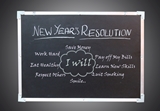
We would all like to knock a presentation out of the park. Would make us feel good, and better yet, look good to employees, clients, our leadership. A presentation, however, is not always like hitting a tee'd up ball. There are many complexities and preparation to think about. What stories to tell, slides to illustrate your message, how you stand, where to include pauses, when to involve the audience.
Not to mention the pressure of being in the "adrenaline zone" and keeping your thoughts straight, and succinct. No wonder we fear speaking in public more than anything else. But, the payoff to giving a great presentation could mean a bonus, promotion, new business and at the very least - respect.
What makes up a great presentation? Sometimes, there are greater lessons that can be found in what not to do. We look to TED Talks to get a list of quick, common mistakes speakers should avoid.
10 Ways to Ruin a Presentation
Take a really long time to explain what your talk is about.
Speak slowly and dramatically. Why talk when you can orate?
Make sure you subtly let everyone know how important you are.
Refer to your book repeatedly. Even better, quote yourself from it.
Cram your slides with numerous text bullet points and multiple fonts.
Use lots of unexplained technical jargon to make yourself sound smart.
Speak at great length about the history of your organization and its glorious achievements.
Don't bother rehearsing to check how long your talk is running.
Sound as if you're reciting your talk from memory.
Never, ever make eye contact with anyone in the audience.
While this certainly isn't a complete list, they are quick tips to implement early and improve your next presentation.
Our very own, Carlos Alvarez, Senior Training Consultant at Tero International has a YouTube video on our channel that can help calm your nerves when faced with the "adrenaline zone" you will find yourself in during a presentation.

Are you familiar with the concept of Primacy and Recency? Surely you have caught yourself or someone else saying, "hopefully I made a good first impression" before. Whether we are meeting a new client for the first time, or entertaining friends at your home - we all hope to make a favorable impression. Because it is all in our best interests to have a favorable impression, let's break down the idea behind Primacy and Recency.
Let's say for instance you are attending a luncheon and plan to meet people you haven't seen before. The way you dress, the way you introduce yourself, how you hold yourself all play a role in how these people build a perception of you. This perception is built, according to research, in a matter of seconds. This may not give them an accurate picture of who you are, but the picture has been formed regardless. This is known as Primacy. Primacy is where you set the tone for the rest of the interaction. Think about your most recent interactions at a networking event, meeting with a client for the first time, or even your last presentation. What do you think people thought about you in those two short seconds?
On the other end you have recency. This is where you close off the interaction and want to end on a good note. A lot of people seem to forget to end strong. This is the person at a networking function who walks away from the conversation without a handshake, or the person who ends a presentation with something like, "So, that's about it for my presentation..." Recency is important moment we should all leverage if we want to leave a good impression. Think about the people you've seen recently who had a strong close? What do think about those people? What can you learn from them?
The whole interaction, no matter the scenario, should be strong throughout. But, people remember the most from the primacy and recency points. You would be wise to keep this in mind and find what works best for you to have a powerful opening and close in all your interactions.
Deborah Rinner, Vice President, Chief Learning Officer gives tips for what this might look like at your next networking event and how you can better connect with people. Watch the short video here.

Everyone has change in their lives. Some change is welcome, some is not. Change can also come as a surprise, totally unexpected. When are we ever really ready for "change".
Two years ago, while living at home over the summer between college semesters, I received a devastating call while traveling to Illinois with some friends. Back at home, my brother was at a church activity, and my parents were helping an elderly lady move some furniture.
The call was from my brother-in-law. I answered with the typical optimistic, "Hello!"
He went right into the call stating, "I don't know how to tell you this..." (there was a long pause and my mind raced as to what he had to tell me). He continued, "Your house is on fire."
I paused and asked, "How much of it burned? What was saved or lost?"
"Everything is gone," he said. "I'm sorry."
I was silent for the next few minutes and shared with my friends in the car what had happened. All I could do was think about what I had lost. I thought about all of the things that were important to me... things that I had made from woodworking projects, or journals that I had written. What about everything saved on my computer? What about my favorite clothes and collection of shoes? What about my camping gear and pictures? Everything was gone.
It took me awhile, but I finally realized that it was easier to think about what I had, rather than what I had lost. An old shirt, baggy shorts, and a $2 pair of flip flops to travel in. My car that was sitting at my friend's house. Thinking back, I had no time to comprehend it, or control it. It just 'happened'.
In our work and in our lives, we really don't have time to project out what might be coming. What changes might be around the corner? How are we positioned to better handle any possible change? How do we respond to the 'change'?
Next week, just two years after the house was lost, we will be moving into a newly built house in the same spot. Things worked out. Why? Because my father positioned us with good insurance, positive attitudes, and the belief that we had to 'push forward' during this unfortunate and devastating change. While many sentimental things were lost, our family was safe.
There were many lessons learned from this tragedy. Make an investment in protecting things of value, our homes, cars, and our lives. Take time to prepare for any circumstance with a 'plan'. Take time to put valuables in a safe. React positively in a way that will get through the worst of situations. In the end, what are those things we need to protect? Each of these things were valuable lessons, all learned from this 'change'.
While we can't always prepare for a change, our response in how we react is what defines us. While not always easy to deal with at first, a 'change' can allow a life-changing experience for the better with patience and perseverance.
What are the implications for your career? How can you be prepared for the "fires" that might ignite at any given moment?

In 1960, a man did what no man had done before.
Joe Kittinger, now a retired Colonel in the Air Force, from 20 miles above Earth, took a life-endangering leap.
In an interview done by Forbes Global, Kittinger explains what happened on that day so long ago.
The Ascent
At 2am, Kittinger arose to prepare for the flight up. He was in the heat of the dessert in New Mexico and had to layer in warm clothing under his pressure suit. He had to stay in air-conditioning to keep him from sweating. If he sweat before the ascent, his clothes would freeze on the way up. He started breathing oxygen at 4am for two hours to get all of the nitrogen from his blood.
He traveled in his balloon upward for about an hour and a half. As he reached 40,000 ft., his right hand glove inflated from the pressure. He knew that if he radioed his doctors, they would call off the mission, so he resisted. He knew he might lose the use of his right hand with the swelling, and he did so for the remainder of the flight.
Kittinger explained the view to be beautiful from the top and that he could see 400 miles in every direction. With the beauty that he saw, he was also struck by danger. If his suit failed, he would die in seconds. He said blood boils at 62,000 ft. and he was well past that.
Once ready to jump, he went through his 46-step checklist. He disconnected from the balloon's power and then relied completely on the power on his back. He stood up, said a silent pray, and jumped.
While we probably won't experience quite an exhilaration as Kittinger's jump, we surely have daily fears that require us to take a "leap". Fears that we may view as life-endangering. Fears we know will advance us in our careers or become the salesperson we've always dreamed of. Fears we see others conquering, but we still can't seem to take action. Fears that keep us from a beautiful 400-mile view atop the world.
Kittinger fell for about 13 minutes before landing in New Mexico where his team was waiting for him. He fell at a speed of 714mph and was in temperatures as low as 110-degrees-below-zero. His hand was fine in a few weeks. After such a risk, Kittinger had broken four world records: the highest balloon ascent, highest parachute jump, longest duration drogue-fall, and fastest speed by a human being through the atmosphere.
Now, we might not all go out and break four world records by conquering one of our fears. But, you can start small. What is something you've been putting off doing that you can tackle tomorrow?
Whatever it may be, it will be the beginning of a new habit for you. By taking yourself out of your comfort zone daily, you will make a difference in your life and career over time. A difference that others will notice. Remember:
"The fears we don't face become our limits." - Robin Sharma

Approximately, how long does it take someone to develop a skill? Approximately how long to lose one?
We are all on all this path of life-long learning. Very often, it seems as though as soon as we pick up a new skill, that skill vanishes very quickly.
Many of you are graduates of our IMPACT: How To Speak Your Way To Success program and have found how difficult and uncomfortable it is to make the learnings stick and create new habits. And that's completely normal.
For everyone else, maybe you are trying to learn a new email system? Remember the first day on a new job? How about cooking a new recipe? Whatever it is, no matter how hard or easy the task, things take time.
Back to the original question: how long does it take someone to develop and lose a new skill? This is important to understand because you want to make sure you put in enough time to truly climb the ladder and turn knowledge into habit.
Take a look:
Twenty-one Days to Start a Pattern
You must practice a new skill for Twenty-one days to start a pattern.
One Hundred Days for the Pattern to Become Automatic
It will take one hundred days for this new pattern to become automatic.
Thirty Days to Forget a Message
This is why you must practice each day. Consistency is key.
Sixty-six percent of the message is forgotten in Twenty-four hours - only twenty-four percent is retained.
Eight Days of Constant Reminding for Ninety Percent Retention
It is important to put new skills to work right away. Research shows that the sooner you implement a new behavior, the better your chances of making it a permanent part of your life.

"We live in a fast-paced, digital world that bombards us with information. Our in-boxes are a constant procession of new and old names demanding our attention. Our brains are in constant overdrive trying to keep track of all the bits and bytes and names that cross our desk each and every day."
This is a snippet from Keith Ferrazi's New York Times Bestselling Book, Never Eat Alone. We are reminded of how quickly our world is changing. We are also reminded of how many things there are to keep track of. People, meetings, passwords, bills to pay. We are training ourselves to become machines. Efficient machines at that.
Why are we not machines when it comes to following-up? Think about how many people you've met in the past month and how many of those you could see developing into a business relationship? A personal relationship? Surely more than a handful. Now, how many of those individuals did you follow up with? Most likely less than a handful.
Let's take a look from the other side. How many of those potential contacts followed up with you? Probably less than a handful. What would it mean for your network of connections if you were the person to follow-up? It would instantly set you apart from 95 percent of people by sending a simple email the next day or within 48 hours.
Being a person who follows up will help you succeed in any field. While we would suggest using a handwritten letter, an email is a whole lot better than nothing at all.
What Should Be Included In a Follow-up?
Ferrazi suggests some great reminders for a successful follow-up:
Always express your gratitude
Be sure to include an item of interest from your meeting or conversation
Reaffirm whatever commitments you both made
Be brief and to the point
Always address the person by name
After e-mailing, send requests to connect through social media
Timeliness is key. Send them as soon as possible after the meeting or interview
Don-t forget to follow up with those who have acted as the go-between for you and someone else.
Tero Take
We reiterate the importance of following up. It is amazing how many people we meet in a day and seem to forget the follwing next day. Following-up provides an opportunity to connect on a deeper level and will get passed the (sometimes) superficial stage. Connecting after an event or even after a person you met at a local coffee shop will show you are a true professional and will help you stand out from the majority.
We created a short video on how you can connect and present yourself professionally in the networking arena. If you can connect better at the event, the other person will be more willing to meet up with you after an initial follow-up. Good luck!

Entertaining clients should run smoothly. Or at least we hope it will. After all, your reputation is on the line. For some, it may be a nerve-wracking experience. Especially for people who are just getting started in their career.
Many things will be out of our hands once we walk into the restaurant. There are also many items we can control and should make sure to give attention to.
Here is a list to review and make sure you appear polished and professional when entertaining in a restaurant:
Know the restaurant you are using
Pick your table
Avoid the avoidable
Pay the bill in advance
Affirm that you are the host with the captain and wait staff
When you greet your guest near the entrance or when you walk in together
When you go to the table to await your guest
Seating your guests
Offer a beverage
Discretely let your guest know the limits of your hospitality
Allow your guest to order first
Handle the smallest detail
You might be interested in getting your clients to share more information and be more effective in the sales process. We created a video on using open-ended questions to help you accomplish that.

Surely you have had the opportunity of attending an event on behave of your company. It seems as though there is added pressure in these situations. You are responsible for the image of an entire organization. How you walk, talk and even eat at these events are worth paying attention to.
Here are tips to keep in mind to enter and leave the party looking like a professional:
Brief yourself on the event you attend. Obtain a guest list to find out who will be present. Make a mental agenda of all those you would like to meet at the event.
Call the appropriate person regarding dress if it is not stipulated on the invitation. Dress conservatively. You can never go wrong when you dress in business attire, unless the occasion states black-tie on the invitation.
Reply within forty-eight hours of receiving your invitation. If you cannot attend, call the host and regret.
Don't bring a guest unless the invitation states that you may.
Arrive on time and don't overextend your welcome by being the last one to leave.
Greet the host and hostess early in the evening.
Hold a beverage in your left hand so that your right hand is free for handshaking.
Circulate. Shake hands and introduce yourself to others especially if no one introduces you. Give your full name and company name.
Don't hasten to the buffet table or the bar when you arrive at a function. You are not there because the host thinks you are hungry or thirsty.
If a plated dinner is being served, find out where you will be sitting. Introduce yourself to everyone at your table, but avoid table-hopping around the room.
Mingle and make small talk with those you don't know instead of connecting only with those you do know.
Offer your business card only to those who ask for it. Don't push it on anyone or offer it early in a conversation.
Concentrate more on the conversation and less on the refreshments. Monitor your alcohol consumption and refrain from smoking even if others are smoking.
At some personal events, it is appropriate to bring a small gift. Do your research.
Before you depart, shake hands and thank the host for inviting you to the event.
Be an appreciative guest. Write a thank-you note to the host within 24-48 hours following the event.
Have you had a chance to check out our new video series?

We network, we make cold calls, we contact past clients. We do (really) anything to get in front of someone and have their attention and time - in the hopes of generating new business.
All the effort we put into getting a meeting, should be matched by our preparation of what and especially how we are going to present to the other party.
So, now we have a date scheduled and have a fantastic pitch set up for when the day comes. What else do we need to know besides who we are meeting with, the content of the meeting and how our information will be presented?
Here are some additional tips to consider:
When the meeting is coming to an end and you promise to follow-up with next steps, follow-up. Nothing looks worse than all the effort we put into getting to the meeting, spend time meeting and then not following up.
You might be interested in having more leverage leading into a negotiation. We created a short video on how to improve your negotiation skills.

Technology has been a double-edged sword for most of us. We have been able to use it for efficiency in communication, organization, collaboration and numerous other areas. It's really amazing - we can have a video conversation with someone thousands of miles away in real time, for free, send a 10-page document to a hundred people simultaneously and have millions of videos and movies at the touch of a button.
A survey, conducted recently by Harris Poll asked 2,138 hiring managers and human resources professionals, and 3,022 full-time, private sector workers about what were the causes of wasting time at work.
The results? Here are the top 10 contributors:
Cell Phone/texting
Gossip
The internet
Social media
Snack breaks or smoke breaks
Noisy coworkers
Meetings
Coworkers dropping by
Coworkers putting calls on speakerphone
As you can see, half of the distractions at work, according to the survey, are technology related. Not to say that it is bad to take a break from the grind to answer a text or browse the web - but it is easy to get lost and end up wasting half your day without noticing.
Here are some items to consider when trying to cut back on your technology distractions:
Keeping tabs
The first step to spending less time with technology is to understand how much time you are actually spending. Be honest with yourself and see how long you spend surfing the web, checking social media, texting, etc. and aim to cut that number in half.
Batches
A lot of productivity is lost moving from one task to the other and using valuable time to refocus. This is why it is crucial you try to block out times when you can dedicate a solid period to a task, emails, a project, etc.
For an example, you could spend the first hour of your morning, an hour around lunch time and an hour before you leave work to check emails.
Unplug
Technology can easily consume us and has happened to everyone. If possible, hide or turn off your cell phone for a few hours. Also, think about things that you could do "offline". These are good excuses to get away from your computer and the possibility of the urge to surf the web. Go outside and find somewhere quiet (weather permitting) to focus in on whatever needs to get done.
We created a video around communicating and engaging people in a distracted world. Click here to see the video. This is part of a new series of videos we realize every Tuesday.

'Small talk' comes natural to some in a networking environment, to others, it seems a daunting task. How can we strike up a quick, and interesting conversation with someone we've never met before? With someone we know nothing about?
A quick adjustment that will help is the process of the conversation. We often times overthink small talk. Below are some great pointers and thoughts around what the structure of your conversation should look like:
Open conversations with a sincere compliment or with a question that encourages conversation.
The best questions are open-ended - not ones that can be answered with a yes or no response. Questions that begin with who, what, where, when or why are usually good questions.
In addition to asking questions, it is important that you also respond to questions. While responses should not be windy and boring, they should provide insight into you, your goals, your strengths and your interests.
Here are some additional quick tips to keep in mind:
Be well-informed
Focus on the other person and less on yourself
Don't interrupt
Do listen
Think before you speak
Always close a conversation before walking away from the other person
On paper, these bullet points look easier than they actually are and will surely take time to develop. The sooner and more often you put these tips into place, the more effective you will become.

Presentations seem to be viewed as a one-way communication vehicle. The presenter talks to the audience as if there is nobody in the room. The same presentation they can give to one person, a thousand people, or alone in their living room. The audience members will probably listen passively and not be fully engaged with the speaker.
The more you interact with the audience members, the more engaged they will be.
Think about the difference (as an audience member) it makes when you are contributing to the presentation. Being a part of the presentation, rather just at a presentation. Here are 3 ideas for how you can make your presentations more active and keep your audience engaged.
Open with a question or poll for opinions
This is a great time to check for understanding of your topic, (for you) to understand the audience members and to get people thinking and engaged early.
Ask for questions and open up discussions
Whatever type of flow you have to your presentation depends on how you will use this. If there is time for audience members to group up and discuss something related to your topic, it will bring everyone closer and bring energy to the room.
Hands-On (Kinesthetic) Learning
The best way to get people engaged is to have them perform an action or scenario. This one might require more thinking and should make sense in your presentation. Tero structures workshops around Kinesthetic Learning. A great example we use is to have participants practice sales scenarios (cold call, handling a customer complaint, etc.).
The main takeaway is to get you thinking of how to get your audience more engaged. Switch your mindset to thinking about presentations as two-way communication. The rest is up to your creativity and ingenuity.

"People who talk only of themselves, think only of themselves."
-Dale Carnegie
It seems so simple, yet we often forget. Why is it that we talk so much of ourselves? On and on we go about all the great things we have done, or are about to do. Our house, our cars, our vacations, our kids, our weekend plans. As Carnegie says in How To Win Friends & Influence People, "people are a hundred times more interested in themselves and their wants and problems than they are in you and your problems."
When you think of your clients, when you think of your employees, when you think of strangers, acquaintances, relatives, the cashier - are you quick to talk about yourselves? And slow to understand the other person?
Some people think that they are charismatic enough, interesting enough to 'win' over the attention of someone else - with a detailed story or a witty remark. Surely that could work. But why would you always play against the odds? If people are a hundred times more interested in themselves, it is in your best interest to give them exactly what they want.
It might sound counterintuitive, but (in most cases) the less you talk, the more another person is engaged.
Tero Take
We cover much of this in our selling programs illustrating the traditional salesperson who is focused on, 'sell, sell, sell' and not enough on what a potential (or current) client wants. We fail to (fully) understand the client's wants and often results in an unsuccessful relationship. We like how Carnegie puts this principle, "Be a good listener. Encourage others to talk about themselves."
Unfortunately being an effective listener isn't something they taught us in school. We created a video on how you can become an effective listener that ties well with this discussion. Click here to watch.
Remember, "people who talk only of themselves, think only of themselves".

Stress is a powerful benefit to our performance and productivity. Many people won't agree with that statement as they work off 4 hours of sleep and just finished their third cup of coffee before lunch. It is important to note that the previous statement means you are overstressed and overworked. This is the point where we need to slow down and evaluate ways to mitigate stress.
According to the National Foundation For Cancer Research (NFCR), there are five ways to reduce stress every day:
Plan ahead. Stress can build up if you procrastinate your "To Do List". Try to accomplish small tasks each day leading up to your "big day". Small things like choosing your dress can be stressful if done last-minute.
Know your limits. Being overwhelmed with extra commitments can impede your daily responsibilities. Be sure to practice saying "no" and avoid overcommitting. Don't be afraid to ask for help, and be sure to get a healthy amount of rest.
Try to eat nutritious foods and limit sweets during a day. As tempting as it may be, consuming large amounts of unhealthy foods can contribute to decreased energy levels, not to mention feelings of guilt later on. Try to choose alternative options like whole grains, fruits and vegetables filled with cancer-fighting antioxidants, and lean meats during your day. Still enjoy desserts (if mood requests), but keep it in moderation.
Let things go. Nothing's going to be perfect. Relax and enjoy time with family and friends, even if a pie burns or your team loses. Reconcile the situation, move on, and forget about it!
Exercise. Exercise is not only a great way to stay fit, but it increases your endorphin levels and helps keep you stress-free.
Do you exercise any of these tips regularly? Do you see any tips that need more attention? Think about ways to incorporate these tips in your daily schedule.
Start incorporating one today and see how much of a difference you feel.

Life is simply moving too fast to remember names. We are all very much concerned with what is on our agenda. Plus, there are so many things to remember these days. Do I really need to remember that person's name from a 2-minute conversation at the company holiday party? Or the independent accountant from the chamber luncheon?
No, you don't have to. But, it is amazing how something as simple as remembering a person's name can have an impact. We all like to hear our own name and is perhaps one of the best uttered words to us. It shows we genuinely care about the other person and will set you apart from the pack. You will come off as more charismatic and people will likely remember you.
How can I remember the name of every person I meet?
Remembering names is a lot easier than one would think and the below bullets will explain specific formulas you can use in order to become an expert.
Stop telling yourself you don't remember names and start telling yourself "I'm good at remembering names." This statement, repeated often enough can counteract any negative message about not remembering names.
Slow down, listen carefully, and pay attention when you meet a new person. Deliberately take the time for more than an exchange of names.
Use the person's name in conversation. Use it often. Repetition builds memory. "There's a coat rack just inside the door, Jim."
Look at the person's face. Most of us can recall faces better than names. Associate the name with the face.
Use a personal connection such as someone else you know with the same name. "That's my middle name."
Ask the person to spell his or her name. "Is that Steven with a 'v' or Stephen with a 'ph'?"
Tell the person what you have heard about him or her. Acknowledge talents or specific contributions. "I understand that this Business Protocol Workshop was your idea, Mark."
Show enthusiasm. Let your tone of voice and body language indicate a degree of happiness that you have met this person.
Focus more on the person and less on yourself. Focus when you meet someone and when you say good-bye.
If someone doesn't remember your name, come to the rescue immediately. Extend your hand, smile, and say your name.
If you can't remember someone's name: Put him or her at ease rather than focusing on your own embarrassment. Extend your hand, smile and say your name. The other person most likely will then say his or her name.
Never say, "I can't/don't remember your name." Say, "Please tell me your name again."

In 1908, Robert M. Yerkes and John D. Dodson of Harvard Physiologic Laboratory discovered the effects of stress on performance and what has been named Yerkes-Dodson Law. We might look at stress negatively, but is there more we should consider? It might be fair to say that we live in a world where people take pride in being a "workaholic" and spend many sleepless nights to keep a competitive edge.
We certainly aren't suggesting becoming a workaholic or depriving yourself of sleep. On the other hand, we are not suggesting the opposite. Each of us functions best within a certain range of stress: our personal comfort zone. Awareness of the signs that indicate whether we are in or out of that zone is a valuable tool in time and life management.
Below is a summary of the findings from Yerkes and Dodson's research and might illustrate why having a (manageable) amount of stress can actually be good for us.
Up to a certain level:
Increased stress = increased performance and efficiency
However, if stress increases beyond this level (above personal comfort zone):
Too much stress = decreased performance and efficiency
The study further revealed that:
Too little stress = decreased performance and efficiency
Most of us are aware when we are functioning within our comfort zone. Typically we feel energized, remain calm under pressure and find work enjoyable. However, recognizing the signs and symptoms that indicate we are functioning outside of our comfort zone is not always as clear.
Where do you rank in this stress discussion?

We are constantly learning, processing new information, and replacing the old. This is most likely the reason you are reading this blog. Looking at blogs alone - there are over 900,000 new articles posted every day. We've become a learning machine with information spreading exponentially and sometimes it can feel like most information doesn't "stick". A key element to growth and retaining all this new information comes down to something we (should) do every night: sleep.
Research at the University de Lille in France shows that sleep time may affect the previous day's learning. By cutting sleep by as little as 2 hours, recall may be impaired the next day, especially with complex material. Scientists speculate that sleep gives your brain time to clean house and process emotional issues for the day.
Research suggests that REM sleep (the deepest sleep-state) is critical for the brain to process the events of the day. During sleep, your brain is able to unlearn unnecessary information and clear pathways in the brain for increased brain efficiency.
Dreams (whether remembered or not) may be helping you clean your brain house.
Further research on the subject of sleep has shown that the brain performs best after deep physiological rest. How much sleep is enough? Different people need different amounts. Some people seem to need 8 - 10 hours while others function fine on 4 - 6 hours per night. The key is getting sleep that is deep enough to reach the brain cleansing dream state.
To keep up with the competitive world we live in, we find ourselves sometimes getting a lack of sleep to keep up with our workload. Just remember to get a good night's rest when you can. Your brain will thank you for it.

We tend to exhibit four different behaviors at different times in a negotiation; depending on our emotional state and on the situation we are in.
The 4 categories are:
Assertive
Passive
Passive-aggressive
Aggressive
Most people in negotiations tend to exaggerate the degree to which they differ with opponents and tend to expect the worst in behavior from the other side. These findings suggest that people are not very good at anticipating the behavior of others.
Most negotiators predict they will respond aggressively to aggressive behavior from the other party - in other words, they believe they will fight fire with fire. Yet multiple studies showed that individuals who predicted that they would behave aggressively in the face of aggression actually resort to a more passive behavior. When faced with aggression, most people reduce their own expectations and enable outcomes that favor the other party.
Too many negotiators reward their opponents for aggressive behavior.
The rational negotiator needs to analyze the source of the other parties' aggression carefully. Is the negotiator talking tough because he or she has a very good alternative or is this just his or her style? If the former, you may need to make concessions to secure an agreement. But when aggressiveness is all style and no substance, there is no reason to reward this behavior.

Everyone wants to be magnetic. Everyone wants to be charismatic. We want to walk into a room full of strangers and leave with a hundred new friends. Some people seem to "have" it. Others don't.
While being charismatic might seem a natural ability, it isn't necessarily. Think of the most charismatic people you know personally. Sure, some may be natural, but I bet there are a handful of cases where the person worked and molded themselves into the peacock you now see today.
The best news is you too can become that peacock. While this blog won't instantly put you in a magnetic position instantly, it should serve as a base to start and to illustrate that charisma is a learned skill.
Olivia Fox Cabane lays out the basic principles or charismatic behaviors in her book, The Charisma Myth. These behaviors fall into three areas: presence, power and warmth.
Presence
This one seems to be among the hardest for most. Presence is the act of being present. Meaning, when you are talking to someone, you are fully engaged. No texting, avoid scanning the room, refrain from listening to internal conversations you are thinking about.
One of the main reasons we are distracted is because of our ancestors. Being aware of everything around us at all times was important to our survival. The other reason we are distracted is because of society and the advent of technology. We won't get into that here.
To be charismatic, you must be in the moment and actively listening to what the other person is saying.
Power
Being seen as someone who has influence can attract a variety of people. Think of celebrities, politicians, business leaders. Power makes people listen. Where do we look for clues of power? Research says it comes from someone's appearance, in others' reaction to this person, and, most importantly, in the person's body language.
Warmth
This is the stereotypical grandma greeting you with chocolate cookies. The friendly neighbor you would trust babysitting your house while you are out on vacation. Cabane says being seen as warm comes from any of the following: benevolent, altruistic, caring, or willing to impact our world in a positive way.
People determine how strong you are in each of these three categories very quickly. Instantly. This means you need to pay close attention to your body language because it bears a majority of the weight when being charismatic. Here is a snippet from The Charisma Myth you will want to remember:
"In the scope of human evolution, language is a relatively recent invention. But we've been interacting well before this through nonverbal modes of communication. As a result, nonverbal communication is hardwired into our brains, much deeper than the more recent language-processing abilities. This is why nonverbal communication has a far greater impact."
We are very much concerned with what we say verbally. We should focus more on what our bodies are saying because they speak the loudest.
Rate yourself on a scale of 1-5 in your presence, power and warmth. Which areas are you strong in? Where can you improve?
Tero Take
In our workshops, we talk about the first step as being unconsciously incompetent or not being aware you cannot do something. This is much the case when it comes to having a strong and favorable body language for most people. As we become aware and practice a skill, we move into unconsciously competent and the behavior is automatic without thinking. This is where many of the charismatic people you listed earlier most likely are at. It requires both the knowledge and action to make a change and is exactly why our programs are structured with hands-on learning.

Have you noticed that almost everything you invest in comes with a manual that provides detailed instructions on operation and use? From clothes to large and small appliances, to electronics, to toys, and so on, manufacturers provide a useful resource for getting the best from the item you've invested in. Care instructions and warnings are also provided to ensure that you refrain from doing something that will cause serious or irreparable damage.
Wouldn't it be nice if the people you invest your time with came with instruction manuals? As a member of a team, each of us makes an important investment of our time, energy, and creativity - for better or for worse. Getting the best out of teams means getting the best out of each individual. How can you know how to bring out the best in others? One key is in learning what makes each person on the team tick - and what ticks them off.
Writing an operator's manual on yourself is a good investment of your time for two reasons:
It will cause you to look at yourself in a new way and become more accountable for your actions, reactions and behaviors.
It will provide others who work with you with a useful tool to bring out the best in you - and warn them about your hot buttons.
You can prepare your personal operator's manual by conducting a self-assessment. When are you at your best? When are you at your worst? What energizes you? What drains you? What are your hot buttons? What are signs that would indicate you are under stress? What are your greatest strengths? What are your development areas?
After you have conducted a self-assessment, share your thoughts with others. Solicit input from people who know you well.
Armed with this valuable information about yourself, write a one-page operator's manual that contains tips about working with you. Consider the following questions as you write your operator's manual:
At my best, I...
Under stress, I...
Tips for communicating with me.
Tips for providing me with feedback.
Tips for working on projects with me.
My hot buttons are...

Selling has always and will always be, an art form. It's a balance between fulfilling our own agenda and seeking to understand the customer's desired outcomes and interests. Balance is where long-term success is found.
If we just stick to our own perspective, we risk failure in the sales process or arriving at a solution that not only does not satisfy either person's interests, but also results in mistrust. Fisher and Ury developed four principles to effective negotiations. It allows sales professionals to shift the sales process from traditional transaction to consultative approach that benefits all parties.
Try to visualize yourself in the sales environment as you walk through these 4 steps:
1. Build and Preserve Relationships
In this first step, the sales professional seeks to build or preserve a relationship. The individuals get to know each other as people and trust and rapport are fostered. Unfortunately, this step is often overlooked or rushed in the spirit of efficiency. Taking time to build a relationship may seem like a time-wasting activity. It is useful to remind yourself that businesses don't do business with businesses, people do business with people and people have emotional and relational needs.
2. Identify Underlying Interests
In the sales process, sales professionals and customers alike tend to focus narrowly on what they want (often in the short-term). In this second critical step, sales professionals guide a process that seeks to discover the underlying interests of both parties. A real interest is not just what you want, it is why you want it.
3. Generate Options
There are usually many solutions that will satisfy underlying interests - if we are willing to look hard enough for them. During this step, sales professionals seek to create value by introducing and exploring options that benefit both sides. It is a natural tendency to rush to judgment when ideas are suggested. Skillful sales people know that this third step involves creativity and invention. They reserve evaluation and judgment for the next step.
4. Evaluate Options and Make Decisions
During this step, sales people seek to reach agreement with the customer on a solution. This is the close. In-depth discussions around price and quantity happen in this step along with evaluation of options around the longer-term. The sales person introduces outside, objective criteria to guide the decision-making process, realizing that independent information that is trusted by the customer helps facilitate an outcome both parties can agree to.
It is not only important to do these four steps. They must be done in the right order. When sales training and negotiation skills training are studied side-by-side, we quickly discover that sales training equips sales professionals with important skills that are appropriate to use in Step 3 of the Outcome-Driven Selling process. When they are used too early, sales are reduced to discussions around price and volume, relationships suffer and neither party receives the full benefit that the steps deliver.
Tero has adapted this 4-step process into an interactive workshop - Outcome-Driven Selling: A Consultative Approach to Sales. This is how the top sales professionals do it and it can be learned.
With these steps, the customer will often arrive at your solution without having to use closing strategies, unique selling propositions, and lengthy discussions around features and benefits.

There are a lot of phrases that will surely leave your stomach full of butterflies. And we can be sure the question, "do you mind saying a few words?" will get our blood rushing. When presented with this situation, an experienced speaker will only rarely be totally unprepared.
They anticipate the possibility that they will hear this phrase and have at least a few thoughts, and often rehearsed a brief presentation. That is usually the reason that some people can stand up when called upon and deliver a smooth, flowing, intelligent, apparently spontaneous speech.
For the next time you are asked to say a few impromptu words, you might consider these tips:
A Few Words
A few words should be just that-a few words! Rarely should they be more than five or ten minutes of words.
Delivery Techniques
While impromptu speeches are not formally prepared, you can take the techniques learned in preparing a presentation and use them in an impromptu situation.
Stand when possible, otherwise sit up straight. Make eye contact with your audience, increase your volume and vocal inflection, pause for emphasis and use supportive gestures.
Organization
Most likely any impromptu presentation will concern a subject with which you are familiar, so you need only organize information and ideas that you already possess.
If there is any possibility, no matter how remote, that you may be asked to say a few words at a meeting or gathering; have your thoughts organized. It is better to be prepared and not be called on than not to be prepared.
The worst thing that will happen is that you will spend a little preparation time on a speech and then not use it.
It is far easier to make a two-hour speech without preparation than a five or ten minute presentation. The brief speech needs ample preparation, time to gather the ideas and organize them into as few words as possible. And so, if you are to speak well and yet be brief, you need to organize your thoughts.
Every presentation needs an opening and closing, no matter how short. The opening can be short or a little longer, depending on how much think time you need. Remember, you think faster than you speak. Buy yourself some time.
Know Your Audience
What is the occasion?
Who will be there?
What are the most probable subjects?
Who are the scheduled speakers?
Who might be asked to say a few words?
What are they likely to say?
What are the most likely questions?
Are there any known biases or positions?
What are the controversial issues?
How do others view you?
What might you be asked?
Observe what is going on around you and respond to it. Can you comment on something another speaker has said? Can you compliment the audience?
Above All
Don't apologize. Say a few words and then sit down.
We can be sure there will always be butterflies. Being more prepared will make a difference and result in a powerful, concise message.

We are now a full month into our New Year's Resolutions. What are you working on this year? Better spending habits? Working less and finding more family time? It's likely you are part of the "get in better shape" club.
Whatever it is, you might be interested in hearing research on willpower. Willpower is your greatest asset in your journey to meet all of your goals this year. Willpower is the "voice" in your head telling you after a 14-hour work day that you still have time to get on the treadmill before calling it a night. The person holding you back from eating a snickers bar after lunch. Willpower is the reason you bought only one pair of shoes instead of two - even though they were "such a good deal".
We want to bring to light two important research findings about willpower. These two findings are cited in Roy Baumeister and John Tierney's conveniently titled book, Willpower.
Willpower is finite
You can think of your willpower like a tank of gas. Every time you "will" yourself to do something (or not do something) you are burning some of your gas. When you drop down to "e", this is what psychologists call ego-depleted. When you are ego-depleted, it is incredibly hard to say no to your urges.
You have a single tank for all tasks
You might think you have a tank for eating, a tank for exercise, a tank for work, a tank for (fill the blank). This isn't the case. Your one tank encompasses all of those categories. So, if you are telling yourself throughout the day not to eat a handful of M&M's from the jar in the kitchen, you've spent a portion of your gas and have made it harder for yourself to workout tonight.
What this all means in terms of your resolutions
The research suggests we only focus on one big change (in this case resolution) at a time. If you are doing too many things, they will compete with one another - making it harder to commit to all of them. Once one change has become a habit, exercising for instance, then you can move on to learning to ski.
Tero Take
As a training organization, we focus on changing habits - or rewiring. Much of what is practiced in our workshops is difficult because we ask you to adjust natural tendencies you've had for longer than you can remember. Although they will make you more effective, in the beginning they can be overwhelming and draining. We tell people to focus on one thing at a time. Once you are comfortable with that one thing, focus on the next item to improve. It is easy to give up all-together if you are working on changing 5 things at the same time.

How do you feel about taking time out of your busy schedule to be sold to repeatedly over a period of hours?
Unless you are an investor, you would probably never put yourself in that situation. Yet, we do. We opt-in (sometimes) to networking events where it seems this is the nature. A selling frenzy. We no longer look at people as people in this environment. We look at people as dollar signs - your next big opportunity!
It doesn't have to be that way. It shouldn't be that way. If your job is to sell, (as everyone's is) that's fine. It is more important in a networking scenario, many times the first time meeting someone, to add value and have them buy into you as a person. If they are persistent on understanding your business and are interested in what you have to offer, that's a different story. If not, focus on being memorable (in a good way).
How do you acomplish that?
It depends. One thing not to do, is to talk about yourself and then try to sell them something. . . everyone does that.

Our training consultant, Trish Baumhover, was interviewed this month about Getting Smarter on Employee Interviews (click here for the podcast). Trish brought up an important point to consider when interviewing potential employees.
When interviewing a candidate, we should focus on three specific areas to see if the job is compatible: Job fit, Cultural fit, and Motivational fit
Have you ever seen someone fail in a position who possessed the necessary qualifications? Of course, we all have. The problem is usually found in motivational fit (or lack of). Not only must people possess the necessary skills, knowledge and abilities for the position; they must be motivated (want to do the job).
Beyond simply determining if a candidate possesses the necessary organizational and job competencies, it is the job of the individuals involved in the selection process to determine if the candidate is motivated to do the job itself.
Here are some sample questions to ask to get at this very elusive area of motivational fit:
What activities do you enjoy doing? Why?
What duties or situations would you like to avoid in your next job? Why?
What other positions have you applied for recently? Why?
Why did you leave your last position?
What extracurricular activities have you participated in?
What did you like least about your job at (company name)?
What did you like most about your job at (company name)?
All jobs have their frustrations and problems. When have you been frustrated at work? Why?
What have been the most important events or people in your own development?
Why did you choose this career?
Finding if the candidate is motivated to do the job is a huge challenge but one that must be mastered. If overlooked... well, we have all seen what will be the result.

Anxiety, nerves, butterflies - these are all normal in the presentation environment. To a degree, feeling anxious or nervous is a good thing. To a degree. Anxiety produces energy and excitement. However, too much anxiety has never fared well for anyone. Too much anxiety and you lose confidence in yourself and your abilities - which takes away from your message.
Why are we so nervous?
We are nervous (or frightened) of the unknown. Like driving a car for the first time nervous. First day at a new job nervous. Going on a first date nervous.
Tell me how to calm my nerves
The good news is there are several ways to relax yourself. We cannot promise you will rid of all your nerves - and again, being a little anxious is a good thing. Here are a few suggestions when faced with your next presentation (or any nerve-wracking experience):
Be prepared - know your material, know the presentation environment, be on time
Know your audience - not only metaphorically. We mean greeting your audience at the door. This will help you realize they are only people
Loosen up - stretching exercises, deep breathing or a brisk walk are all good for releasing stiffness
Avoid coffee and alcohol
These tips should help you calm down so you can focus on your main objective: hitting a home run. Good luck!

What would you do to become more persuasive? It is required of us on a daily basis and some people are more persuasive than others. Chances are that we all have room to increase our persuasion skills.
Luckily research proves that persuasion is a science. There are guidelines, principles that will make you a more effective. Russell H. Granger provides 7 proven ways you can become more persuasive in his book The 7 Triggers To Yes.
Try incorporating these 7 triggers into your interactions:
The Friendship Trigger - Get people to like you. Exactly how a friend would. This trigger is often a prerequisite for other triggers to be effective. People have to buy into you first.
The Authority Trigger - Establish authority, credibility and power. You want to be perceived as an expert. You won't be trusted unless you appear like you know what you are talking about.
The Consistency Trigger - This trigger requires some knowledge of the other person you are trying to persuade. What are their values? Spending habits? Social status? Risk Tolerance? Be consistent with their actions and behavior. An example: If they are conscious of their spending, talk about cost savings.
The Reciprocity Trigger - We live in a society where when we receive something, we feel indebted to give back. This is why car salesman offers free coffee when you walk into the dealership. Giving, even if it is as small as a compliment, is a key to your likability and influence.
The Contrast Trigger - Show that your proposition is better than a list of alternatives. You have to give the other person(s) a frame of reference.
The Reason Why Trigger - This reason could be virtually anything. Really any reason that makes a hint of sense. For instance, if you are selling a product, you could give reasons such as: limited pricing, limited supply, exclusivity, cost, etc.
The Hope Trigger - This is another trigger that requires an understanding of the other person. What are their hopes and dreams? Frame your proposal to help them reach those hopes.
Tero Take
Having an ability to persuade (or influence) is a powerful skill to have. We focus on using persuasion to get to a win/win outcome where both parties benefit. In addition to using these 7 triggers above, you should also spend great efforts on effective listening. We are often times too quick to jump to talking, and fail to understand where the other party's interests lie. Always keep in mind that persuasion is a two-way interaction.
Click on the image below to purchase your personal copy or gift for someone.